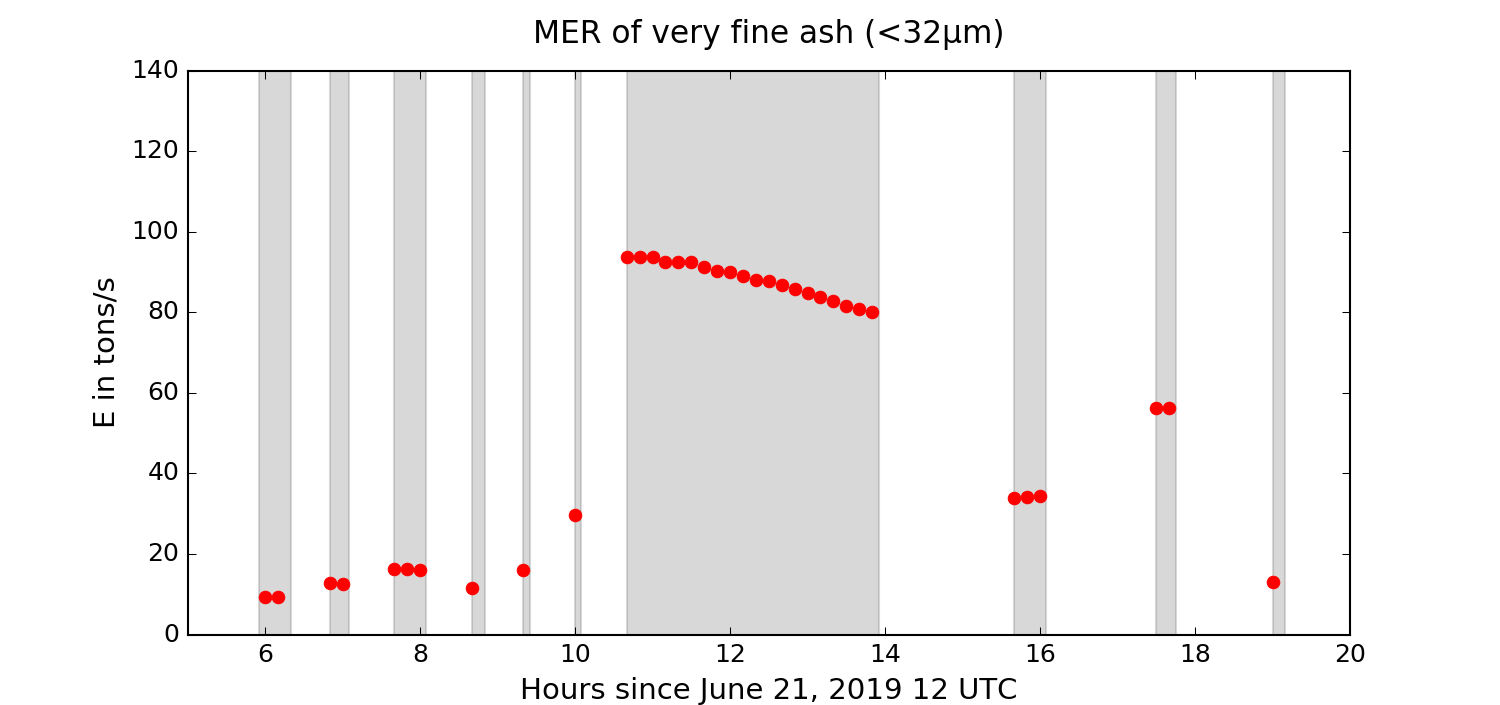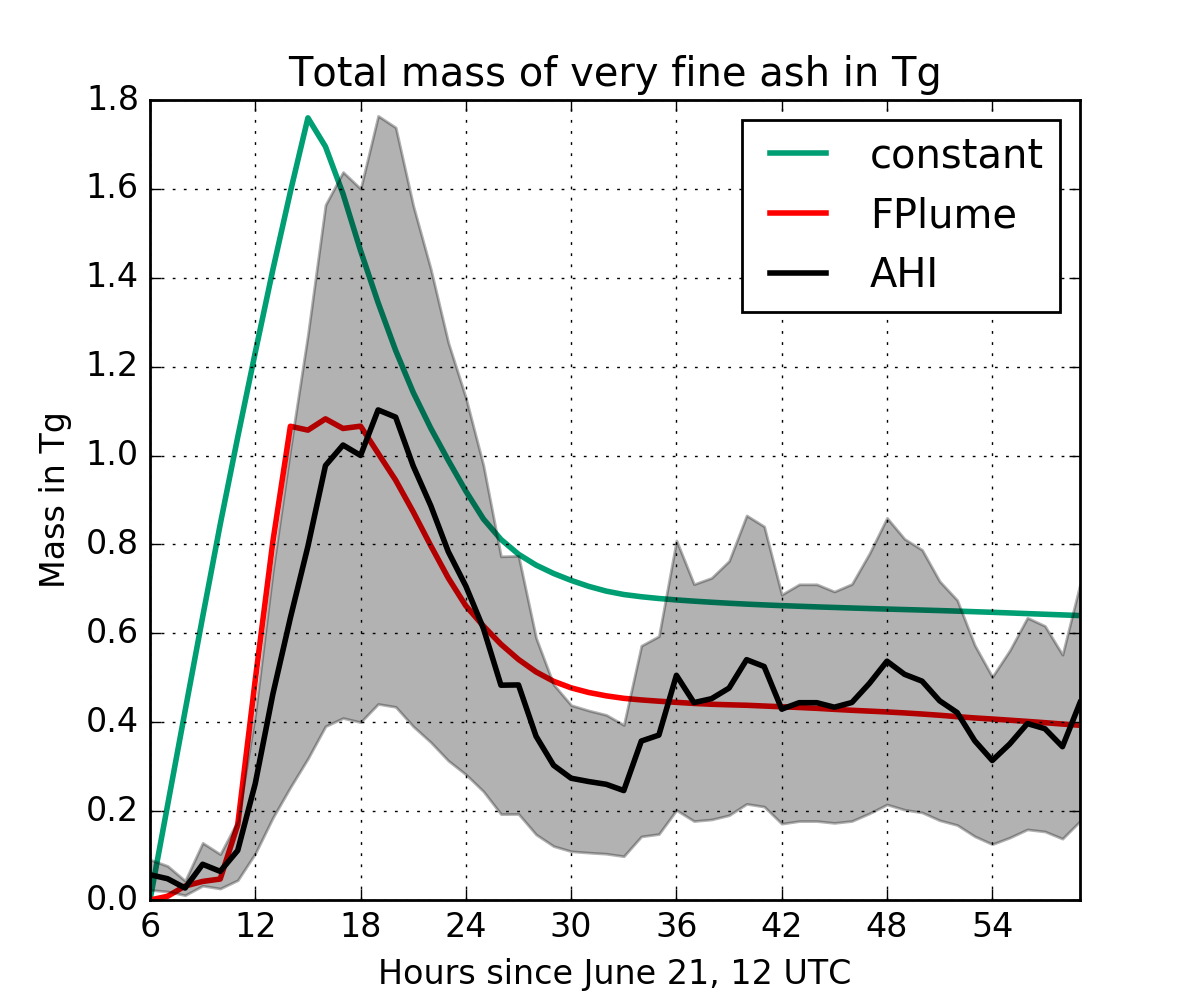Volcanic Ash Dispersion after the Raikoke Eruption in June 2019
In the working group 'Aerosols, Trace Gases and Climate Processes' we use and further develop the model system ICON-ART. In addition to an ordinary weather forecast, ICON-ART enables the modeling of the dispersion and transformation of aerosols and trace gases and their interactions with the atmosphere. We show here an example of volcanic aerosols dispersion modeling performed for the Raikoke eruption in June 2019.
The last volcanic eruption of Raikoke on the Kuril Islands occurred on June 21, 2019. The plume reached a height of up to 14 km. The peculiarity of the eruption was that the volcano did not emit in a single phase but in several shorter phases of different heights. The total length over which emissions took place was about 5.5 hours and was distributed over 10 phases. The period between the beginning of the first phase and the end of the last phase was about 13 hours.
Most forecast models represent volcanic eruptions rather simplistic: the plume height and source strength, are fixed and cannot change during the course of the eruption due to, for example, the variation of the atmospheric or volcanic conditions. In addition, the source strength is usually based on a simple empirical relationship. This approach is also justified for a number of volcanic eruptions. However, in the case of the Raikoke eruption, it leads to large errors in the dispersion forecast, especially in the time span of the eruption.
To account for the complexity of the Raikoke eruption in our dispersion forecast, we coupled ICON-ART with a one-dimensional volcanic plume model (FPlume [1]). FPlume calculates a total mass eruption rate (MER) at each time step based on plume height from satellite data as well as the state of the atmosphere at the location of the eruption. The resulting MER is then multiplied by a factor to extract the fraction of very small ash particles relevant to atmospheric transport. This information is then used as the source strength for the eruption along with the height of the volcanic plume from the satellite measurements for the dispersion calculation in ICON-ART (Figure 1).

Figure 2 shows the time evolution of the total ash mass for different experiments and observations (black: satellite observations from the AHI instrument on the Himawari satellite; red: constant emission [2]; blue: with simulated eruption phase). Especially in the early hours of the eruption, a clear improvement of the predicted ash mass compared to the constant emission is visible when the emissions of each phase are resolved in time. First, the maximum mass agrees better with observations. This follows from the more accurate calculation of the source strength and the improvement in eruption length. Second, the increase in mass in the first 20 hours is better reproduced when the different phases of the eruption are simulated individually.

The results are accepted for publication to the journal 'Atmospheric Chemistry and Physics' [3]. The work was performed within the DFG Research Unit VolImpact (subproject VolPlume) [4].
[1] Folch, A., Costa, A., and Macedonio, G.: FPLUME-1.0: An integral volcanic plume model accounting for ash aggregation, Geosci. Model Dev., 9, 431–450, https://doi.org/10.5194/gmd-9-431-2016, 2016.
[2] Muser, L. O., Hoshyaripour, G. A., Bruckert, J., Horváth, Á., Malinina, E., Wallis, S., Prata, F. J., Rozanov, A., von Savigny, C., Vogel, H., and Vogel, B.: Particle aging and aerosol–radiation interaction affect volcanic plume dispersion: evidence from the Raikoke 2019 eruption, Atmos. Chem. Phys., 20, 15015–15036, https://doi.org/10.5194/acp-20-15015-2020, 2020.
[3] Bruckert, J., Hoshyaripour, G. A., Horváth, Á., Muser, L., Prata, F. J., Hoose, C., and Vogel, B.: Online treatment of eruption dynamics improves the volcanic ash and SO2 dispersion forecast: case of the Raikoke 2019 eruption, Atmos. Chem. Phys. Discuss. [preprint], https://doi.org/10.5194/acp-2021-459, in review, 2021.
[4] https://physik.uni-greifswald.de/ag-von-savigny/projects/dfg-research-unit-volimpact-for-2820/
